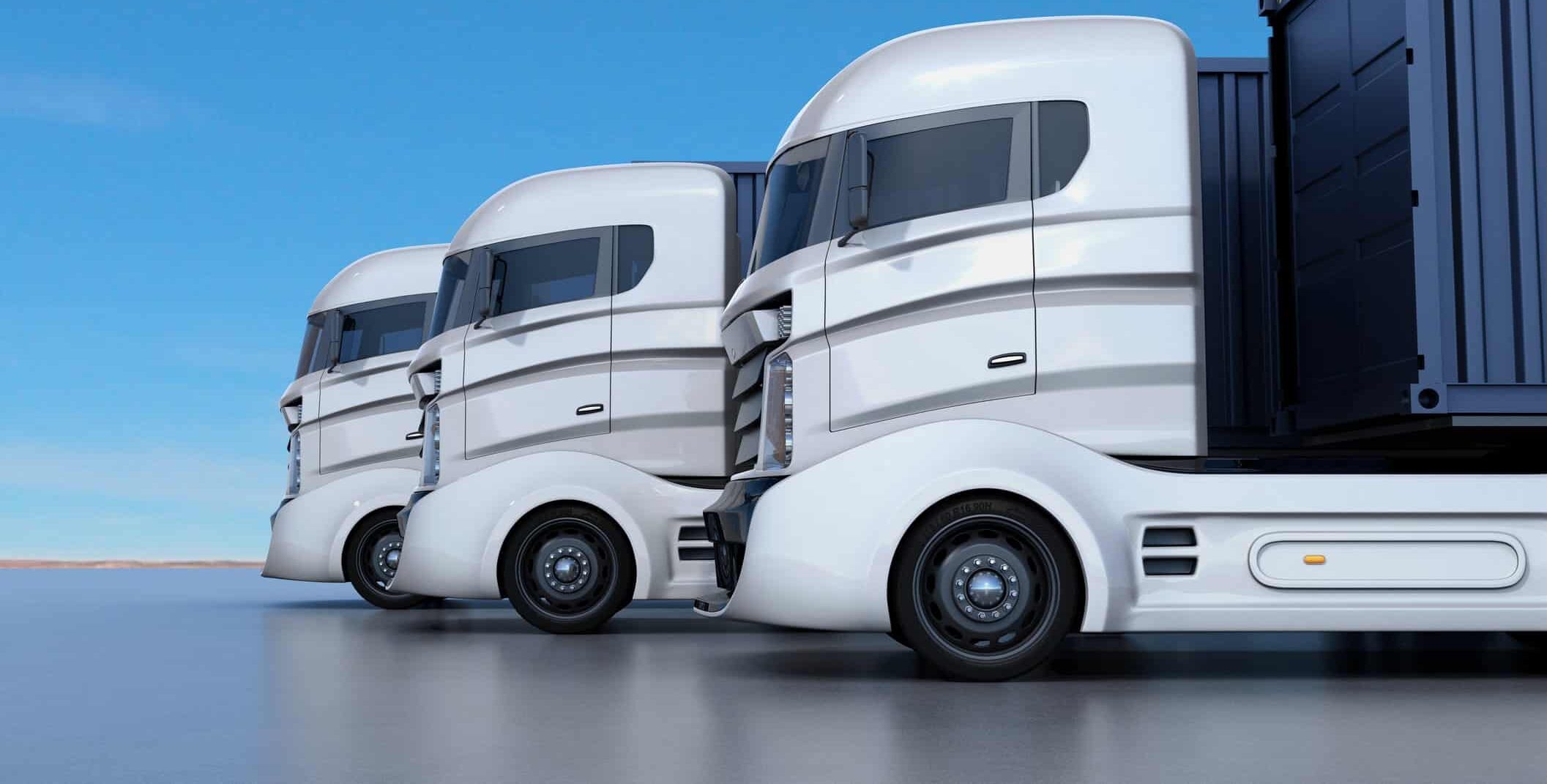The future of AI continues to expand into every industry, including the world of trucking. Back in 2016, the first autonomous truck went for a drive in the United States. The only time the self-driving truck received outside assistance was when a professional driver helped the truck enter and exit the highway.
After a journey of 120 miles of driving, the self driving truck arrived at its destination. From there, the success of the self-driving truck left many questions for professional drivers. After all, drivers are the backbone of the economy.
They deliver products and resources all throughout the country. But are these driverless trucks the future of trucking? And if so, what does that mean for the industry and drivers themselves?
How Does Autonomous Trucking Work?
Rapid advances in technology have quickly changed our perspective about what is or is not possible. A decade ago, self driving trucks would have sounded impossible and terrifying. But now, we live in a world where the future of trucking is on the horizon.
The good news is that autonomous trucking does not mean that they are truly driverless trucks. Well, at least not yet. Instead, the trucks are equipped with Advanced Driver Assistance Systems (ADAS).
ADAS includes software for self-driving features like power steering, radar, cruise control, and automated gear shifting, among other features. The driver is still required to stay in the cabin and know how to make use of the technology.
What Are the Five Levels of Autonomous Trucking?
There are multiple levels of autonomous trucking that will continue to emerge as vehicle technologies become more and more advanced.
- Level 1: Driver Assistance — The only automatic feature is cruise control.
- Level 2: Partial Automation — Acceleration, deceleration, and steering are all controlled automatically. The drivers must always sit behind the wheel so that they can take control of the vehicles if necessary.
- Level 3: Conditional Automation — The driver is present for traffic and environmental conditions, but all other safety functions are automated.
- Level 4: High Automation — The driver is present at all times but every safety function is automated, and the vehicle manages responses to any and all roadway conditions.
- Level 5: Full Automation — The truck performs every single function necessary to operate the vehicle, and there is no need for a driver to be present.
How Long Before Trucks Are Autonomous?
Within the next decade, we will continue to see an increase in autonomous trucks. The shift will not be rapid or happen overnight, even if more and more driverless trucks become available.
This is merely due to the fact that there is more to ensuring that driverless trucks are operational than just testing them on the road. Companies will need time to deploy the vehicles, scale their operations, and train drivers on the new technologies.
Are There Fully Autonomous Trucks On The Road?
Self-driving trucks are currently being tested on the roads. However, it’s important to note that all of these driverless trucks have people on standby in case a computer crashes or a sensor fails.
As it currently stands, there are no fully autonomous or truly driverless vehicles on the road yet.
Will Autonomous Trucks Replace Drivers?
Autonomous trucks will never truly replace drivers. Drivers do much more than simply drive their vehicles from point A to point B. In fact, they perform a substantial amount of non-driving labor-oriented tasks.
For example, many drivers make it a point to search for the safest location to leave their vehicles, ensure that the cargo is properly loaded so that it does not become damaged in transit, and so much more. While it is safe to say that trucks will be able to fully drive themselves someday, drivers will still need to maintain the vehicles and perform the manual labor that AI cannot do on its own.
Things to Consider with Autonomous Trucking
Like it or not, technology is taking over the trucking industry. But that doesn’t mean it’s all bad. In fact, autonomous trucking is only beginning to emerge, and there are numerous factors to consider along the way.
Safety Benefits
Did you know that hundreds of thousands of crashes involve semi trucks every year? With an automated vehicle, the truck is equipped with technology that offers safety benefits intended to reduce crashes and incidents.
Unlike people, technology does not get tired or need to take breaks. With driverless trucks, goods can be delivered at any time throughout the day. Plus, the technology can alert drivers to potential problems well before they become a major concern.
Self-driving trucks and the drivers that assist them can reduce crashes, prevent injuries, and ultimately save lives thanks to the technological advances that they contain.
Energy Saving Potential
Autonomous driving also has the potential to reduce fuel consumption. Studies have shown that autonomous trucks driven at lower speeds utilize less fuel than manually-driven vehicles. In fact, there was a 10% improvement of fuel efficiency.
Last Mile Transportation
While autonomous trucks can handle the majority of the driving process, a driver is still required for the last mile transportation. This includes finding the correct location, determining the safest place to park the truck, and ensuring that the vehicle does not get damaged.
While autonomous trucking will safely deliver the truck to its final destination, human assistance is required in order to complete the transport process.
Delivery Time
As the industry continues to progress, driverless trucks will help cut down on delivery time. The reason for this is that the trucks do not require sleep in order to operate in the way that humans do.
Instead, they can travel for long periods without needing to stop for rest, take a bathroom break, or grab a bite to eat. With AI at the wheel, the trucks will be able to shorten the time it takes for a product or package to reach its intended destination.
Shipping Costs
When you remove parts of human involvement, you increase the driving functionality. As mentioned above, trucks are involved in hundreds of thousands of accidents annually.
With self driving trucks tackling road hazards and driving for long stretches, there will be fewer accidents, which will result in more cash in the company’s pockets, not to mention the fuel-related savings we mentioned above. Companies will begin to see an increase in their revenue, which will ultimately lead to lower shipping costs.
Advantages of Autonomous Trucking
Autonomous trucking is becoming a reality that continues to emerge within the industry. Thanks to the new AI technology, we will begin to see the following advantages unfold in the trucking and supply chain spaces.
Minimize the Number of Accidents
Safety benefits are one of the most appealing advantages of autonomous trucking. While no self driving trucks are fully safe or accident-proof quite yet, they will significantly reduce traffic incidents overall.
Reduce Traffic Congestion
Driverless trucks can travel easily during off-peak hours. This will result in a reduction of traffic congestion during peak hours.
Resolve Driver Shortages
Currently, there are nearly 100,000 truck drivers needed in the United States. As current drivers begin to retire, this number will only continue to increase. Self driving trucks will ultimately reduce the number of drivers that are needed, thus resolving any and all driver shortages.
Disadvantages of Autonomous Trucking
With all the pros of autonomous trucking, there are cons as well. Here are some of the biggest disadvantages about autonomous trucking as a whole.
Insurance and Legal Liability
The technology of driverless trucks is impressive, but the technology lends itself to various legal and liability-oriented requirements. The question that remains is if there is an accident, who is responsible?
The exact answer is not yet set in stone, so for now, there will still be insurance and legal questions surrounding autonomous trucking.
Security Concerns
Since self driving trucks operate with the help of advanced software, these trucks are vulnerable to hackers. If, by chance, a hacker infiltrates the software and gets ahold of the system, they will have the ability to override your control of the truck, which is very dangerous.
Laws and Regulations
There are currently laws and regulations that impede autonomous trucks from being able to be utilized nationwide. In order to use self driving trucks, permits will be required no matter where you are in the United States.
Until that happens, we will not see an increase in driverless trucks.
Autonomous Trucking Coming Soon
While the shift towards autonomous trucking may not happen overnight, the reality is that we can still expect it to happen sometime in the future. This may be ten years down the road, or even further.
No one can predict when self driving trucks will become a widespread phenomenon across the nation, but no matter when it happens, driverless trucks are the future of trucking. However, that’s not to say that truck drivers should panic and start looking for a new career!
There will always be plenty of opportunities for truck drivers, especially those who are interested in expanding their skill sets with this new future forward technology.


